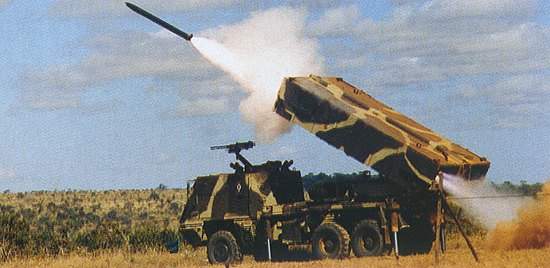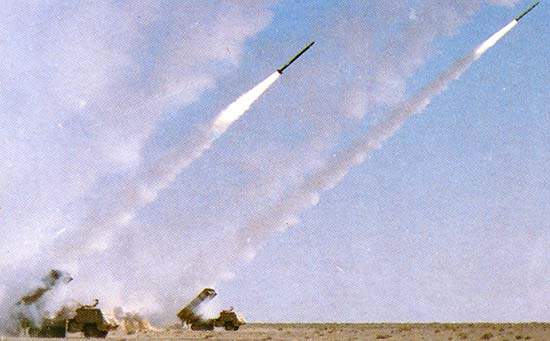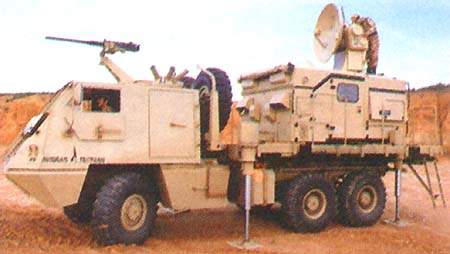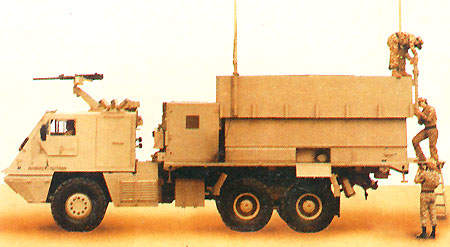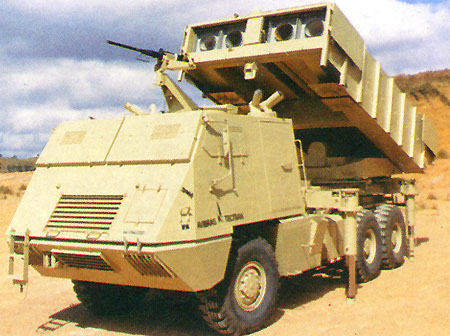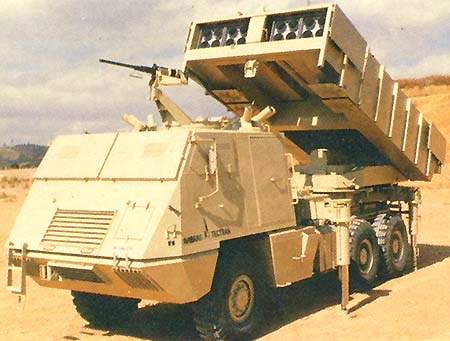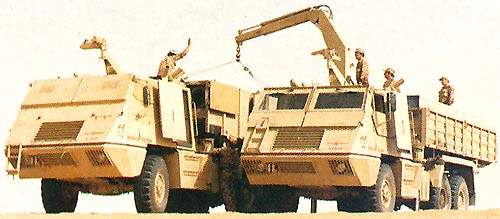
Astros II artillery rocket saturation system
Astros II (Artillery Saturation Rocket System) is developed and manufactured by Avibras Aerospacial SA based in Sao Paulo, Brazil. Deliveries of Astros II started during 1983 and the system is operational in the Brazilian Army, Saudi Arabian Defence Force and the Malaysian Army. The system is battle proven, having been used in action by the Iraqi Army in the Gulf Wars. Saudi Arabian systems were used during the Gulf conflict in 1991.
In August 2007, Malaysia placed an order for a second batch of 18 Astros II systems. The first batch of 18 systems was delivered from 2002.
Astros II rocket system vehicle fleet
The Astros II rocket system includes a fleet of vehicles:
- Universal multiple launcher (AV-LMU) capable of firing five kinds of rockets with different calibres
- Ammunition supply vehicle (AV-RMD) for resupply of the AV-LMU, carrying two complete loads for each launcher
- Command and control vehicle / fire control unit (AV-VCC) to provide the battalion level command with coordination and direction of firing missions for up to three Astros batteries
- Mobile workshops for electronic and mechanic field maintenance of the system
- Optional electronic fire control unit (AV-UCF) which main task is to facilitate the procedures of fire direction using radar and computer.
Astros II can also be configured as a coastal defence system when deployed with an AV-CBO searching and operation centre.
Typical Astros II missile battery configuration
A typical battery configuration consists of six AV-LMU universal multiple launchers, six AV-RMD ammunition supply vehicles together with an optional AV-UCF fire control unit. An AV-VCC command and control vehicle / fire control unit together with two mobile workshop vehicles which would be stationed at the battalion headquarters.
The system capability includes:
- High mobility and armour protection
- High volume of fire
- Short ripple time
- Minimum crew
- All-weather day and night capability
- Wide operational range and longest ranges in its class
- High accuracy for efficient use of the ammunition
- High saturation firing capability
- Deployment against different types of targets
Astros II rockets
The launcher is capable of firing rockets of different calibres armed with a range of warheads.
- The SS-30 rocket, calibre 127mm, can be loaded with 32 rounds a launcher and has a range between 9km and 30km
- The SS-40 rocket, calibre 180mm, can be loaded with 16 rounds a launcher and has a range between 15km and 35km
- The SS-60 / SS-80 rocket, calibre 300mm, can be loaded with four rounds a launcher and has a range between 20km and 80km
Avibras has developed a tactical missile for launch from ASTROS II. The autonomously-guided Astros TM will have a range of 300km and can be fitted with a variety of warheads.
Astros II AV-VBA 6×6 vehicle base
All the Astros II vehicles are based on the Astros standard chassis AV-VBA 6×6, 10t off-road vehicle which is supplied by Tectran Engenharia, a subsidiary of Avibras based in Sao Jose dos Campos, Brazil. The vehicle has a maximum speed of 90km/h and is fitted with a Mercedes-Benz 280hp diesel engine.

